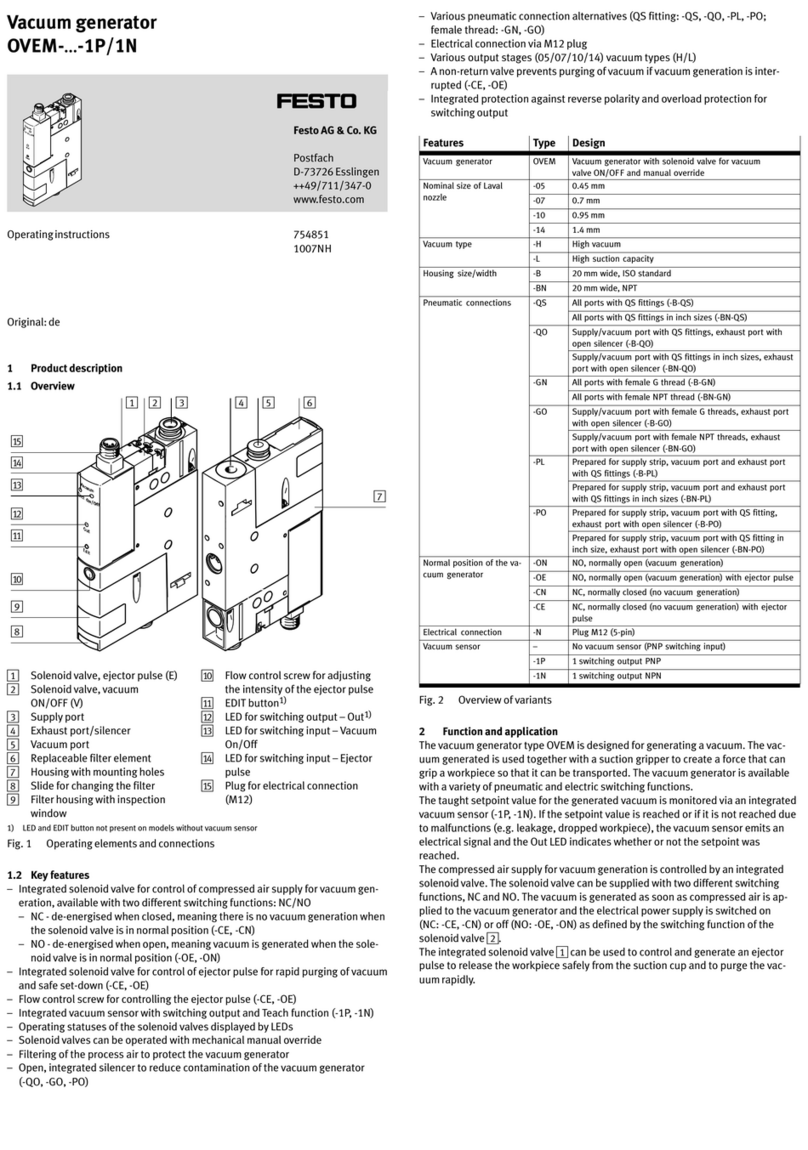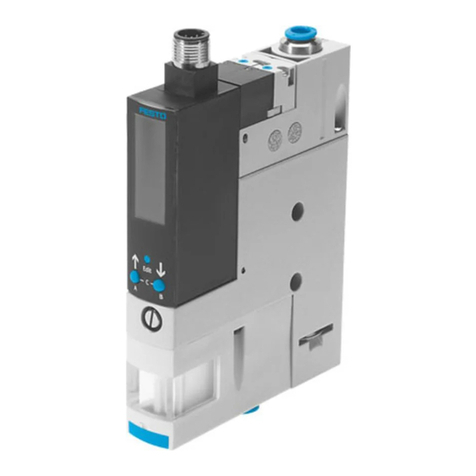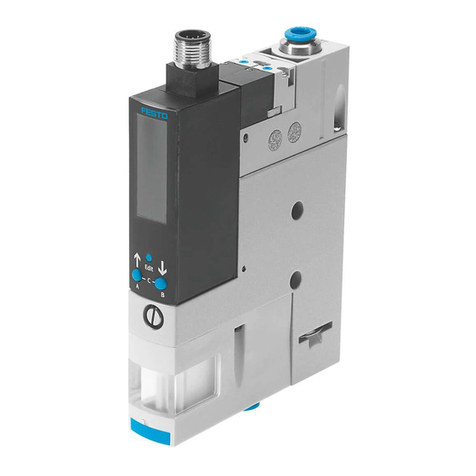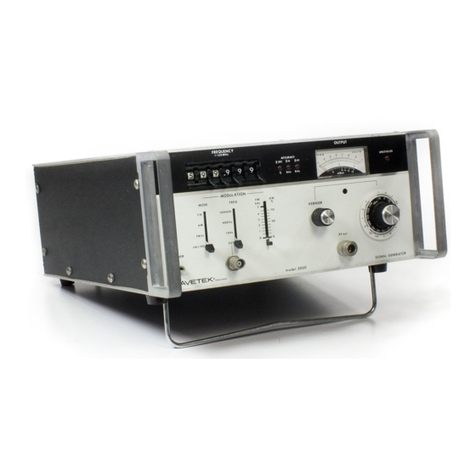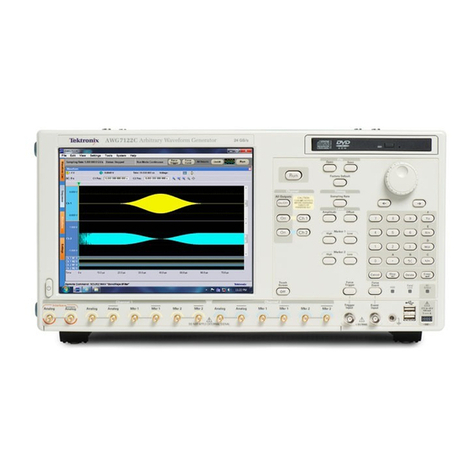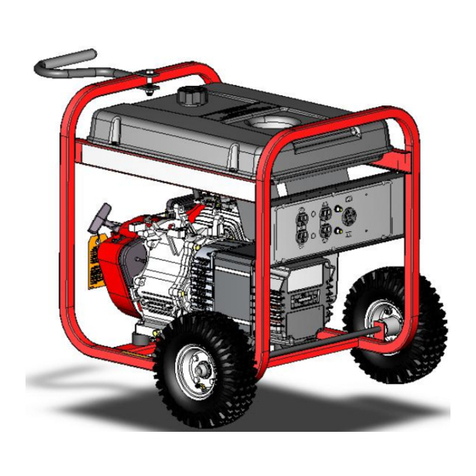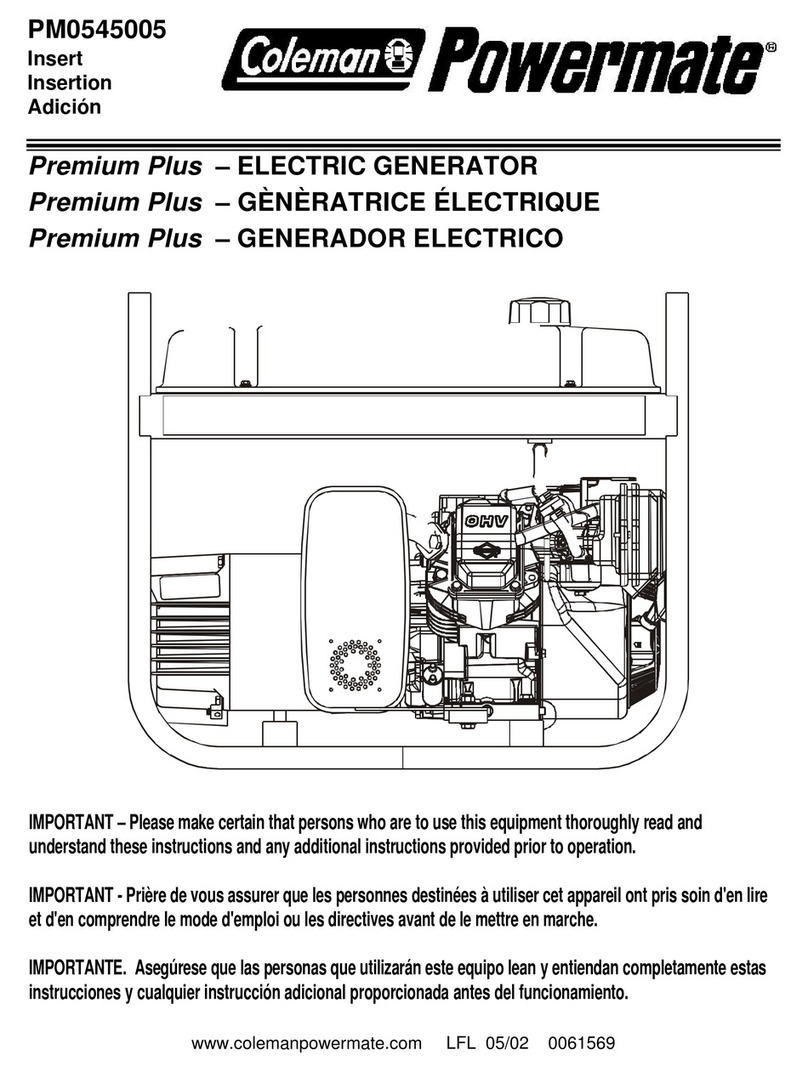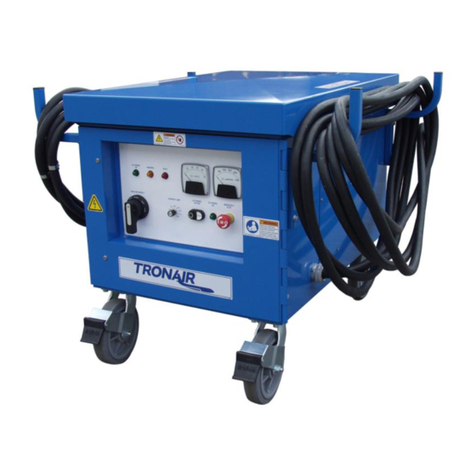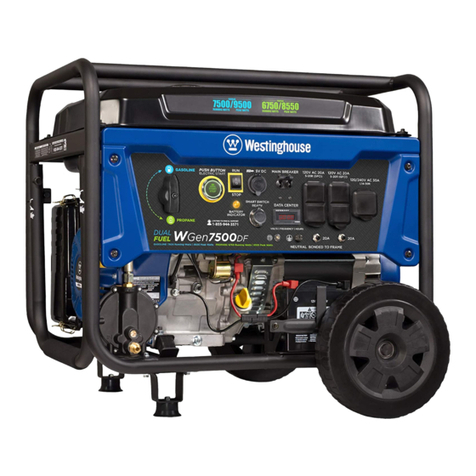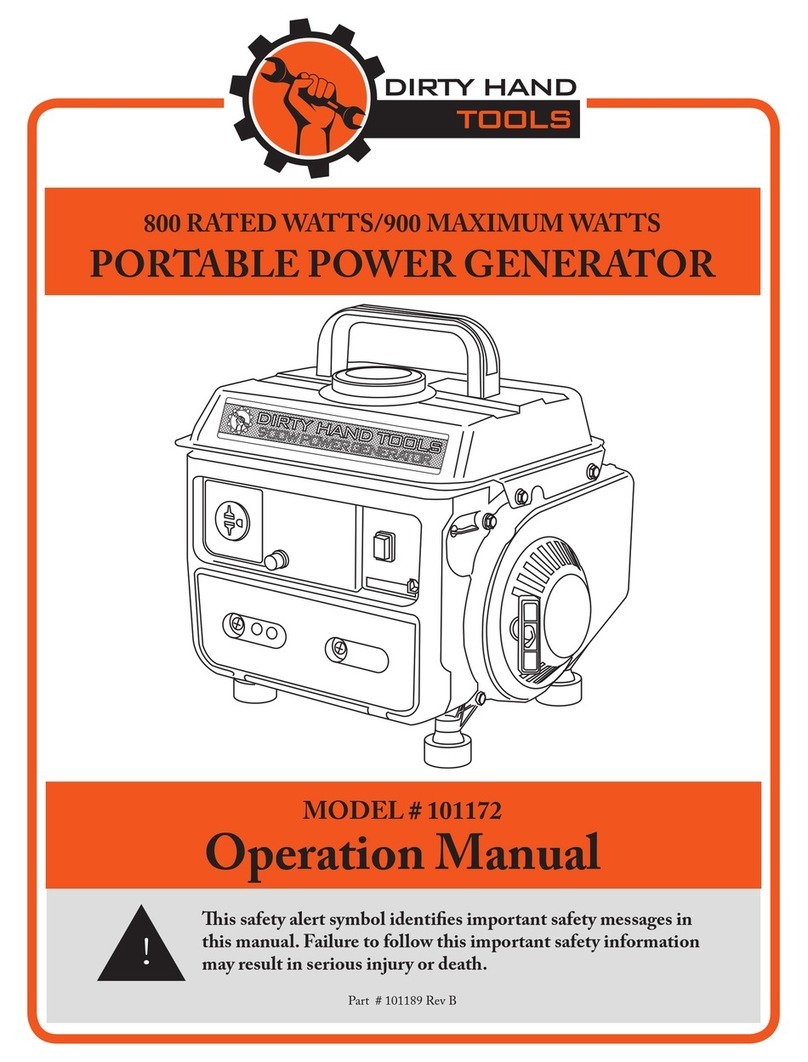Festo OVEM-...-1P Series Parts list manual

Translation of the original instructions
1 Applicable documents
All available documents for the product èwww.festo.com/pk.
Document Product Contents
Instruction manual Manifold rail OABM-P Assembly
Tab. 1 Applicable documents
2 Safety
2.1 Safety instructions
– The product may only be used in its original status without unauthorised
modifications.
– Only use the product if it is in perfect technical condition.
– Use the product only inside buildings.
– Take into consideration the ambient conditions at the location of use.
– The product is intended for use in industrial environments. This product can
generate high frequency malfunctions, which may make it necessary to imple-
ment interference suppression measures in residential areas.
– Observe the specifications on the product labelling.
– Comply with all applicable national and international regulations.
– Observe the local regulations for environmentally friendly disposal.
2.2 Intended use
The intended use of the product is to generate a vacuum.
2.3 UL certification
In combination with the UL inspection mark on the product, the information in this
section must also be observed in order to comply with the certification conditions
of Underwriters Laboratories Inc. (UL) for USA and Canada.
UL approval information
Product category code QUYX (USA)
QUYX7 (Canada)
File number E322346
Standards taken into account UL 61010-1
C22.2 No. 61010-1
UL symbol
Tab. 2 Approval information
The unit shall be supplied by a power source which fulfils the requirements on a
limited-energy circuit in accordance to IEC/EN/UL/CSA 61010-1 or on a Limited
Power Source (LPS) in accordance to IEC/EN/UL/CSA 60950-1 or IEC/EN/UL/CSA
62368-1 or a Class 2 circuit in accordance to NEC or CEC.
3 Service
Contact your regional Festo contact person if you have technical questions
èwww.festo.com.
4 Product design
1Solenoid valve for ejector pulse
(eject)
2Solenoid valve for vacuum
3Mechanical manual override
4Supply port (1)
5Exhaust port/silencer (3)
6Vacuum port (2)
7Housing with mounting hole
8Slide for changing the filter ele-
ment
9Filter housing with display window
10 Flow control screw for adjusting
the ejector pulse
11 EDIT button
12 LED for switching output – Out
13 LED for switching input – vacuum
ON/OFF
14 LED for switching input – ejector
pulse (eject)
15 Electrical connection
16 Size OVEM-...-20/-30-C
Fig. 1 Operating elements and connections
LED and EDIT button not present on models without vacuum sensor
Filter housing with display window only on OVEM-...-B
4.1 Product variants
Product variant Code Meaning
Vacuum generator OVEM Vacuum generator with vacuum solenoid valve ON/OFF
and electric manual override
-05 0.45mm
-07 0.7mm
-10 0.95mm
-14 1.4mm
-20 2.0mm
Nominal width laval nozzle
-30 3.0mm
-H high negative pressureVacuum type
-L high suction volume
-B 20 mm wide, ISO standard
-BN 20 mm wide, NPT
Housing size / width
-C 36 mm wide, ISO standard
all ports with QS push-in fittings (-B-QS/-C-QS)-QS
all ports with QS push-in fittings inch (-BN-QS)
Supply / vacuum port with QS push-in fittings, exhaust
port with open silencer (-B-QO/-C-QO)
-QO
Supply / vacuum port with QS push-in fittings inch,
exhaust port with open silencer (-BN-QO)
all ports with G female thread (-B-GN/-C-GN)-GN
all ports with NPT female thread (-BN-GN)
Supply / vacuum port with G female thread, exhaust
port with open silencer (-B-GO/-C-GO)
-GO
Supply / vacuum port with NPT female thread, exhaust
port with open silencer (-BN-GO)
prepared for common supply manifold, vacuum and
exhaust port with QS push-in fittings (-B-PL/-C-PL)
Pneumatic connections
-PL
prepared for common supply manifold, vacuum and
exhaust port with QS push-in fittings inch (-BN-PL)
8109422
OVEM-...-1P/1N
Vacuum generator
8109422
2019-03c
[8109424]
Instructions | Operating
Festo AG & Co. KG
Ruiter Straße 82
73734 Esslingen
Germany
+49 711 347-0
www.festo.com

Product variant Code Meaning
prepared for common supply manifold, vacuum port
with QS push-in fittings, exhaust port with open silencer
(-B-PO/-C-PO)
Pneumatic connections -PO
prepared for common supply manifold, vacuum port
with QS push-in fittings inch, exhaust port with open
silencer (-BN-PO)
-ON NO, normally open (vacuum generation)
-OE NO, normally open (vacuum generation) with ejector
pulse
-CN NC, normally closed (no vacuum generation)
Normal position of the
vacuum generator
-CE NC, normally closed (no vacuum generation) with eject-
or pulse
Electrical connection -N M12 plug (5-pin)
-1PD 1 switching output PNP, 2 switching inputs PNP, with
display
-2P 2 switching outputs PNP
-2N 2 switching outputs NPN
-PU 1 switching output PNP, 1 analogue output 0…10V
Vacuum sensor
-PI 1 switching output PNP, 1 analogue output 4…20mA
- bar (-B), InHg (-BN)
-B bar
-W InH20
Alternative vacuum display
-H InHg
Tab. 3 Overview of variants
5 Fast commissioning with factory settings
The vacuum generator is supplied with the following factory settings:
– Switching characteristics of the electrical output: threshold value comparator
– Switching element function of the electrical output: NO (normally open)
– Switching point (SP): -0.4bar
– Fixed hysteresis (HYS): 20mbar
1. Mount the vacuum generator è 7 Assembly.
2. Connect the pneumatics for the vacuum generator
è 8.1 Pneumatic installation.
3. Connect the electrics for the vacuum generator è 8.2 Electrical installation.
ÄThe vacuum generator can be commissioned.
It is possible to teach a switching point so as not to use factory settings
è 9.2 Setting the vacuum sensor.
The factory settings cannot be restored.
6 Function and application
The vacuum generator is available with a range of pneumatic and electrical
switching functions.
The taught setpoint value for the generated vacuum is monitored via an integ-
rated vacuum sensor (-1P, -1N). If the setpoint value is reached or if it is not
reached due to malfunctions (e.g. leakage, dropped workpiece), the vacuum
sensor emits an electrical signal and the Out LED indicates whether or not the
taught setpoint was reached.
The supply of compressed air for vacuum generation is controlled by an integ-
rated solenoid valve. The solenoid valve is available in two different switching
functions, NC/NO. The vacuum is generated as soon as compressed air is applied
to the vacuum generator and the voltage is switched on (NC: -CE, -CN) or off (NO: -
OE, -ON) as defined by the switching function of the solenoid valve 2.
The integrated solenoid valve 1 can be used to control and generate an ejector
pulse to release the workpiece safely from the suction cup and to purge the vacu-
um rapidly.
6.1 Switching output and switching inputs
The vacuum is monitored with the aid of a piezo-resistive sensor element. The
vacuum sensor converts pneumatic pressure values to provide electrical signals.
When the taught switching point is reached, the vacuum sensor closes a circuit
and provides an electrical signal. This signal can be used for open- or closed-loop
control functions.
The vacuum generator can be connected to higher-order systems by means of a
switching output (-1P, -1N) and switching inputs. The switching output is con-
figured as a normally open contact. The output’s switching function is defined as
a threshold value comparator.
The solenoid valves for control of the compressed air and ejector pulse are actu-
ated as defined by the input signals.
Fig. 2 Switching characteristics of switching inputs
Code Switching output Switching inputs
-1P Switching output
Positive switching
Switching inputs
Positive switching
-1N Switching output
Negative switching
Switching inputs
Negative switching
Tab. 4 Switching output and switching input variants
6.2 Switching point and hysteresis
Threshold value comparator
NO (normally open contact)
Tab. 5 Settings for switching points SP, hysteresis Hy and functional reserve FR
The switching point is determined from the teach pressure and the functional
reserve. A functional reserve (35% of the teach pressure) is deducted from the
teach pressure (SP = TP – 0.35*TP). For example,with a teach pressure of
–0.5bar, a switching point of –0.33bar is set. The hysteresis has a fixed value.
7 Assembly
An unfavourable mounting position can impair the function of the product.
• Install the vacuum generator so condensation from the compressed air lines
cannot accumulate in the device.
• Install the vacuum generator so that it cannot be heated above the maximum
permissible operating temperature (plan for possible convection).
• Install the vacuum generator so that the exhaust can flow without hindrance.
Direct mounting
Fig. 3 Direct mounting on the side
Variant Screws Tightening torque
OVEM-...-05/-07/-10-...-B M5 max. 2.5Nm
OVEM-...-14/-20-...-B M4 max. 2.5Nm
OVEM-...-20/-30-...-C M6 max. 2.5Nm
Tab. 6 Size and tightening torque of the screws for direct mounting on the side

Fig. 4 Direct mounting on the back
Variant Screw Tightening torque
OVEM-...-05/-07/-10/-14/-20-...-B/-BN M3 max. 0.8Nm
OVEM-...-20/-30-...-C M4 max. 0.8Nm
Tab. 7 Size and tightening torque of the screws with direct mounting on the back
H-rail mounting
Type of mounting permissible only for sizes OVEM-...-B/-BN
H-rail mounting accessories èwww.festo.com/catalogue
1H-rail mounting 2Screw
Fig. 5 H-rail mounting
1. Mount mounting plate on H-rail mounting 1.
2. Hang OVEM with H-rail mounting in the H-rail and press in the direction of the
arrow.
3. Secure to the H-rail with screw 2.
Mounting via mounting bracket
Type of mounting permissible only for sizes OVEM-...-05/-07/-10/-14/-20-...-B/BN
Accessories for mounting bracket èwww.festo.com/catalogue
Fig. 6 Mounting with mounting bracket
Variant Screws Tightening torque
OVEM-...-05/-07/-10-...-B/BN M5 max. 2.5Nm
OVEM-...-14/-20-...-B/BN M4 max. 2.5Nm
Tab. 8 Size and tightening torque of the screws for mounting with mounting
bracket
– Mount vacuum generator at the intended position using two screws (screw
size )
We recommend using corresponding washers.
Mounting on common supply manifold
OVEM-...-B: Mounting is possible on a common supply manifold with a maximum
of 8 places.
OVEM-...-C: Mounting is possible on a common supply manifold with a maximum
of 4 places.
Assembly instructions for common supply manifold OABM-P
è 1 Applicable documents.
8 Installation
8.1 Pneumatic installation
OVEM-... -05-...-
GN
-07-...-
GN
-10-...-
GN
-14-...-
GN
-20-...-
GN
-30-...-
GN
-05-...-
GO
-07-...-
GO
-10-...-
GO
-14-...-
GO
-20-...-
GO
-30-...-
GO
Tube length [m] <
0.5
< 2 <
0.5
< 2 <
0.5
< 2 <
0.5
< 2 <
0.5
< 2 <
0.5
< 2
Min. internal diameter of tubing [mm]
- Supply port 1 2 1.5 2 2 3 3 4 4 5 6 7
- Vacuum port 2 3 3 4 4 5 5.5 6 6 7 9 11
- Exhaust port 2 3 3 4 4 5 5.5 6 6 7 9 11
Tab. 9 Minimum inside diameter of the connection tubes for connections with G-
female thread
Notes on the pneumatic connection
– Maximum permissible tube length 2 m
– OVEM-...-GN/-GO: minimum inside diameter of the connection tubes
è Minimum inside diameter of the connection tubes for connections with G-
female thread.
– Do not seal exhaust port.
– OVEM-...-07/-10/-14/-20/-30: If necessary, lengthen silencers with a silencer
extension èwww.festo.com/catalogue.
– Recommendation: Use type PUN tubes èwww.festo.com/catalogue.
8.2 Electrical installation
WARNING!
Risk of injury due to electric shock.
• For the electrical power supply, use only PELV circuits in accordance with IEC
60204-1/EN 60204-1 (Protective Extra-Low Voltage, PELV).
• Observe the general requirements of IEC 60204-1/EN60204-1 for PELV cir-
cuits.
• Only use voltage sources that ensure a reliable electric separation from the
mains network in accordance with IEC 60204-1/EN 60204-1.
Long signal lines reduce the immunity to interference.
•Signal lines £ 30
– Ensure operating supply voltage of 24VDC±15%.
The solenoid coils and electrical components may be damaged if the permit-
ted switching voltage is exceeded.
– Connect the cable socket to the plug aE.
– Wire up the vacuum generator è Pin allocation.
Plug
M12x1,
5-pin1)
Pin Wire
colour2)
Function
1 Brown (BN) +24V
2 White (WH) Switching input for vacuum ON/OFF
3 Blue (BU) 0V
4 Black (BK) Switching output (Out)3)
5 Grey (GY) Switching input for ejector pulse ON/OFF
1) Tightening torque max. 0.3Nm
2) When using the plug socket with cable as per Accessories
3) Pin 4 not assigned for types without vacuum sensor
Tab. 10 Pin allocation
Circuit diagrams
OVEM-...-1P

Circuit diagrams
OVEM-...-1N
OVEM without vacuum sensor
Tab. 11
9 Commissioning
– Observe the transport area of the workpiece and make sure that:
– Nobody is positioned underneath the workpiece
– There are no foreign objects (e.g. by means of a protective screen).
– Avoid long tubing lines and large volumes between the suction gripper and
the vacuum generator. A large volume leads to long evacuation times and
possibly incorrect settings on the vacuum sensor.
– Take into account accelerations, external influences, etc. on the workpiece
when setting the required holding force.
Unintentional pressing of the EDIT button (for longer than 2seconds) may cause a
modification of the preset switching pressure.
• Make sure that the Edit button is only pressed intentionally. Otherwise a
switching pressure of 0bar would be set if there was no operating pressure,
for example.
To prevent damage to the EDIT button, always use a blunt object to actuate the
EDIT button.
9.1 Building up the vacuum
1. Pressurise the vacuum generator with an operating pressure at the supply
port 4.
2. Switch on the operating voltage.
3. Energise the switching input for vacuum ON/OFF.
ÄThe solenoid valve 2 (-CN, -CE) is opened (or closed in the case of -OE, -
ON). The compressed air flows through the vacuum generator and gener-
ates a corresponding vacuum at the vacuum port 5. The vacuum can be
set by changing the operating pressure.
9.2 Setting the vacuum sensor
The vacuum sensor setting for monitoring the vacuum depends on the applica-
tion. The vacuum generator is preset at the factory
(è 5 Fast commissioning with factory settings). These settings can be quickly
adapted to the application by teaching a switching point.
1. Switch on the operating voltage.
2. Set the desired teach pressure (e.g. object gripped).
3. Hold down the EDIT button aA for >2s.
ÄThe LED Out aB flashes.
4. Release the EDIT button aA.
ÄThe current teach point (TP) minus the functional reserve is saved as the
switching point (SP) and is applied for the switching output.
5. Carry out a test run, varying the pressure to check whether the vacuum
generator’s switching output switches as desired.
9.3 Setting the ejector pulse (-OE, -CE)
The intensity of the ejector pulse can be adjusted. You can set the intensity of the
ejector pulse by adjusting the flow control screwaJ.
1. Screw the flow control screw aJ in completely in a clockwise direction.
ÄThe ejector pulse channel is now closed. No ejector pulse is generated.
2. Unscrew the flow control screw until the required intensity of the ejector
pulse is reached.
3. Test the settings of the ejector pulse before commissioning.
9.4 Reducing the vacuum
OVEM-...-CN/-ON
• Cut off the compressed air supply by switching the input voltage off (in the
case of -CN) or on (in the case of -ON).
ÄThe vacuum port5 is pressurised. The workpiece detaches itself from
the suction gripper.
OVEM-...-CE/-OE
• Switching on the solenoid valve for ejector pulse1 generates an ejector
pulse.
ÄThe vacuum port5 is pressurised. The workpiece detaches itself from
the suction gripper.
When using large suction cups, on lifting the suction cup from the workpiece the
flow resistance in the cup can result in a build-up of a device-independent vacu-
um. This may result in the workpiece not being released from the suction cup,
even if the ejector pulse is set to a sufficiently long duration.
The solenoid valve for ejector pulse 1 should therefore only be switched on
shortly before the suction cup is lifted away, to ensure that the ejector pulse is
active during lifting of the suction cup.
10 Operation and use
The last saved settings are retained in the event of a power failure.
10.1 Mechanical manual override
Both solenoid valves can be manually switched with the manual override.
Fig. 7
1. Press in the plunger of the manual override with a blunt pin.
ÄThe solenoid valve switches.
2. Remove pin.
ÄThe plunger of the manual override is automatically reset. The solenoid
valve returns to the initial position.
10.2 Vacuum generator status display
LED Status Meaning
Off Switching point not reached
Lit Switching point is reached
Out
Flashing Teach procedure is started
Off Solenoid valve for vacuum ON/OFF is not
switched, no vacuum is generated
CE/CN
Lit Solenoid valve for vacuum ON/OFF is
switched, vacuum is generated
Off Solenoid valve for vacuum ON/OFF is not
switched, vacuum is generated
Vacuum
ON/OFF
OE/ON
Lit Solenoid valve for vacuum ON/OFF is
switched, no vacuum is generated
Off Solenoid valve for ejector pulse is not
switched, no ejector pulse is generated
Eject
Lit Solenoid valve for ejector pulse is
switched, an ejector pulse is generated
Tab. 12 Vacuum generator status display
11 Maintenance and care
Clean device
1. Switch off energy sources:
– Operating voltage
– Compressed air
2. Clean device with non-abrasive cleaning agents.
3. Check air filter through the display window for dirt.
Replace air filter
The air filter cannot be replaced in the vacuum generator OVEM-...-20/-30-C

1Gate valve 2Filter
Fig. 8 Remove/install air filter
1. Exhaust the vacuum generator.
2. Carefully pull gate valve 1 out to the first detent. The gate valve must stay in
this position on the filter.
3. Pull filter 2 out. Clean with white spirit.
4. Push filter into the housing.
5. Push in gate valve.
ÄThe gate valve pushes the filter into the vacuum generator.
12 Fault clearance
Malfunction Possible cause Remedy
Increase the intensity
of the ejector pulse
Lift the suction cup
more slowly from the
workpiece
Workpiece not released from suc-
tion gripper
A vacuum has built up when lifting
large suction cups quickly
Set the ejector pulse to
active when lifting the
suction cup
Tubing used between the suction
cup and vacuum generator is
wrongly sized (tubing is too long
and/or tubing internal diameter is
too small)
Replace tubingWorkpiece not released from suc-
tion cup
Flow control screw is closed Open the flow control
screw
Operating voltage faulty Switch on supply
voltage/maintain per-
mitted operating
voltage range
Connections are swapped (reverse
polarity)
Wire the device in
accordance with the
circuit diagram
No control signal Check controller
No LED display for switching inputs
Device faulty Replace device
Pressure failure Eliminate pressure fail-
ure
No LED display for switching output
Vacuum generator operated with
impermissible medium
Replace the vacuum
generator and operate
only with compressed
air
Short circuit or overload at the out-
put
Eliminate short cir-
cuit/overload
Incorrect switching point taught
(e.g. at 0 bar)
Repeat teach proced-
ure
LED display or switching output
does not react in accordance with
the settings made
Device faulty Replace device
Tab. 13 Fault clearance
13 Disassembly
1. Switch off energy sources:
– Operating voltage
– Compressed air
2. Disconnect pneumatic and electrical connections from the device.
3. Loosen mountings and remove device.
14 Technical data
OVEM-... -05 -07/-10 -14/-20--
B/-BN
-20/-30--
C
General
CE marking
(Declaration of conformity
èwww.festo.com/sp)
In accordance with EU EMC Directive
c UL us - Listed (OL)Approvals
RCM Mark
OVEM-... -05 -07/-10 -14/-20--
B/-BN
-20/-30--
C
Characteristic values
Operating pressure OVEM-...-
QS/-GN/-PL
[bar] 2 … 6
Operating pressure OVEM-...-
QO/-GO/-PO
[bar] 2 … 8
Pressure measuring range [bar] –1 … 0
Overload pressure at vacuum
port
[bar] £ 5
Ready-state delay [ms] £ 500
Dead time (evacuation and
ejection)
[ms] < 10 £ 20 £ 35 £ 60
Electronics
Nominal operating voltage [V DC] 24 ± 15 %
Max. output current (per
switching output)
[mA] 100
Voltage drop (for all switch-
ing outputs)
[V] ≤ 1.5
No-load supply current [mA] < 70
Coil characteristics 24 V DC –
low current phase
[W] 0.3
Coil characteristics 24 V DC –
high current phase
[W] 2.55
Time until current reduction [ms] 80
Capacitive load maximum DC [mF] £ 100
Overload protection Present
Inductive protective circuit adapted to MZ, MY, ME coils
Insulation voltage [V] 50
Surge resistance [kV] 0.8
Max. current consumption
OVEM-...-2P/-2N [mA] 270
OVEM-...-PI/-PU/-NI/-NU [mA] 180
OVEM-...-1PD [mA] 170
Accuracy [% FS] ± 3
Hysteresis [% FS] ± 0.1
Short-circuit resistance Yes
Reverse polarity protection For all electrical connections
Environment
Ambient temperature [°C] 0 … 50
Temperature of medium [°C] 0 … 50
Contamination level 3
Operating medium Compressed air to ISO8573-1:2010 [7:4:4]
Note on the operating medi-
um
Lubricated operation not possible
Note on materials RoHS-compliant
Shock resistance (in accord-
ance with
IEC60068/EN60068)
30g acceleration with 11ms duration (half-sine)
Vibration resistance (in
accordance with EN60068-2)
10…60 Hz: 0.35 mm /
60…150 Hz: 5g
Protection class III
Degree of protection IP 651)
Relative humidity [%] 5 … 85
Emitted interference According to EN61000-6-4
Immunity to interference According to EN61000-6-2
Maximum permissible signal
line length
[m] 20
Materials
Information on materials –
seals
NBR HNBR
Information on materials –
housing
Die-cast aluminium, PA reinforced Wrought
aluminium
alloy
Information on materials –
plug housing
Nickel-plated brass
1) Degree of protection has not been evaluated by UL
Tab. 14 Technical data

15 Circuit symbols
OVEM-... Symbol
with vacuum sensor
(-1P/-1N)
Without vacuum sensor
-QO/-GO-CN-...
-QS/-GN-CN-...
-QO/-GO-ON-...
-QS/-GN-ON-...
-QO/-GO-CE-...
-QS/-GN-CE-...
-QO/-GO-OE-…
-QS/-GN-OE-...
Tab. 15 Circuit symbols for the functions
This manual suits for next models
13
Table of contents
Other Festo Portable Generator manuals
Popular Portable Generator manuals by other brands
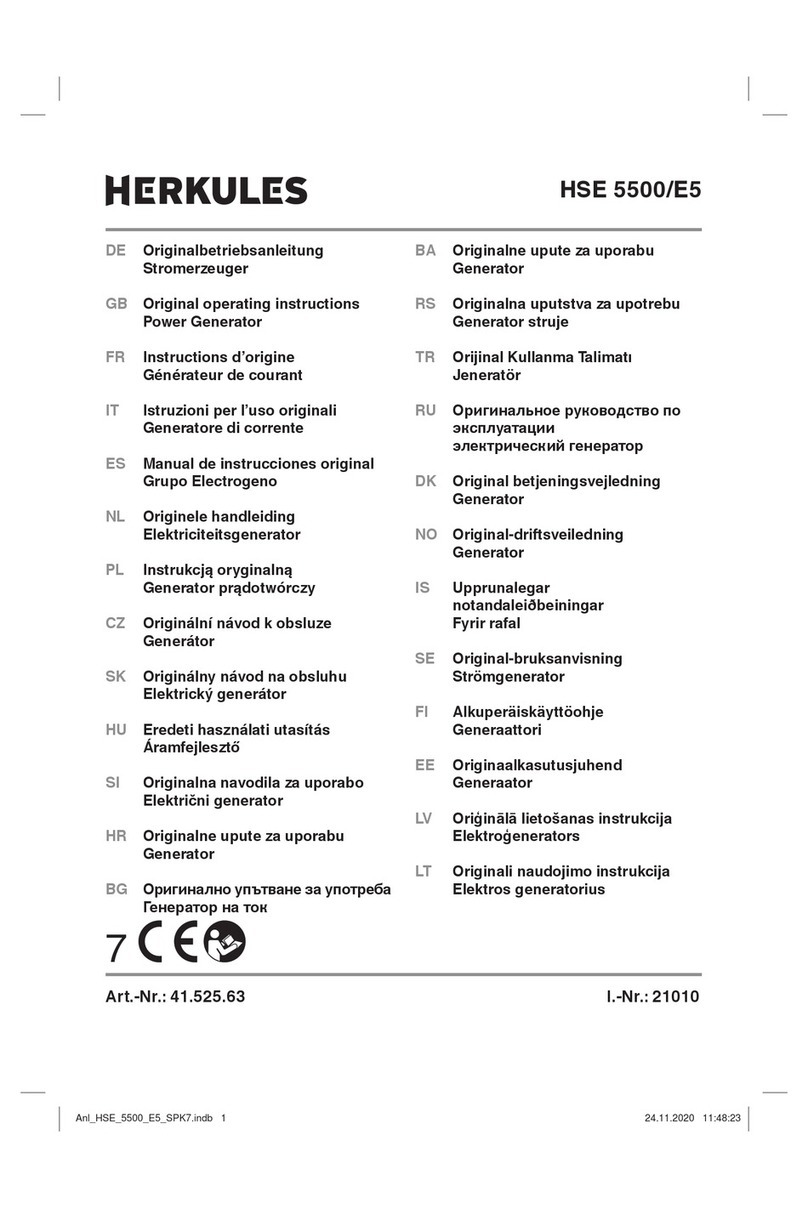
HERKULES
HERKULES HSE 5500/E5 Original operating instructions
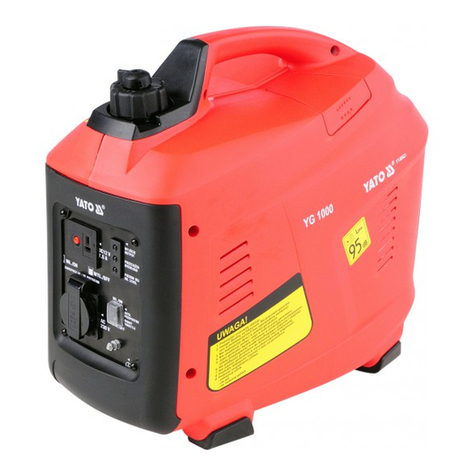
YATO
YATO YT-85421 Original instructions
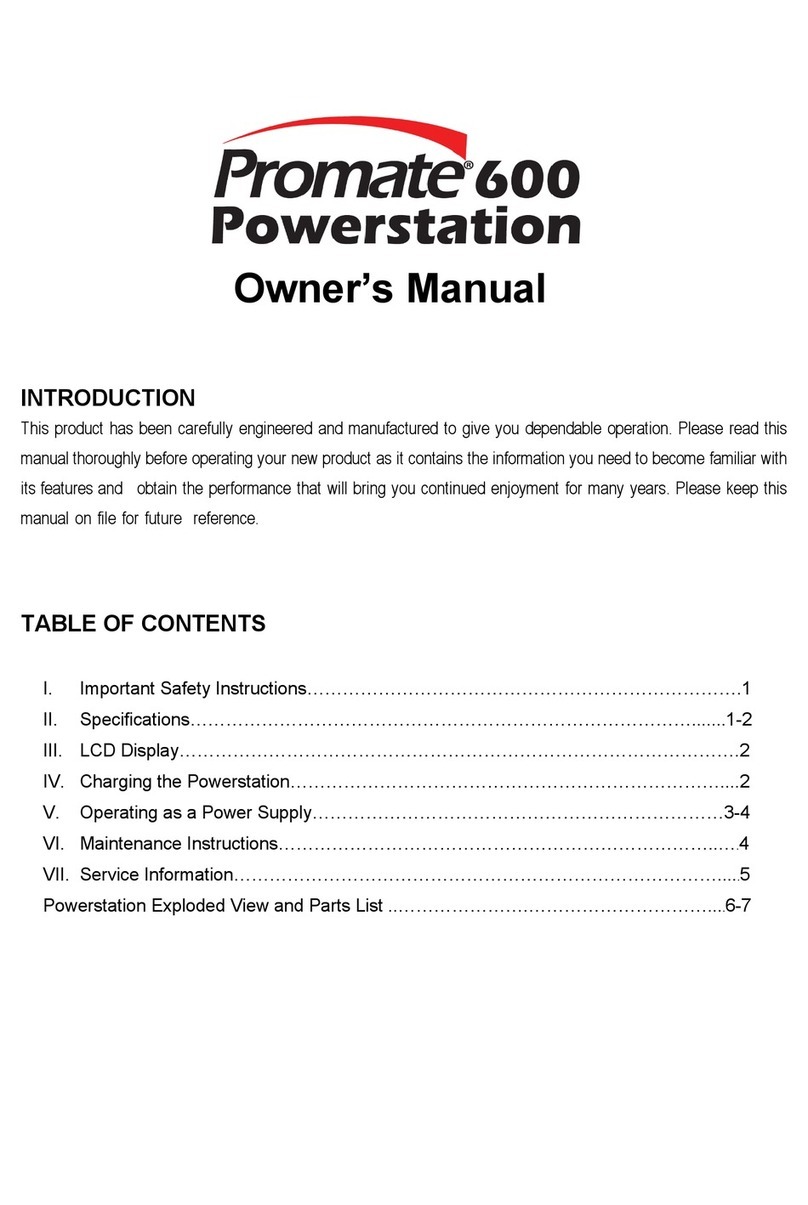
PowerTech
PowerTech Promate 600 owner's manual
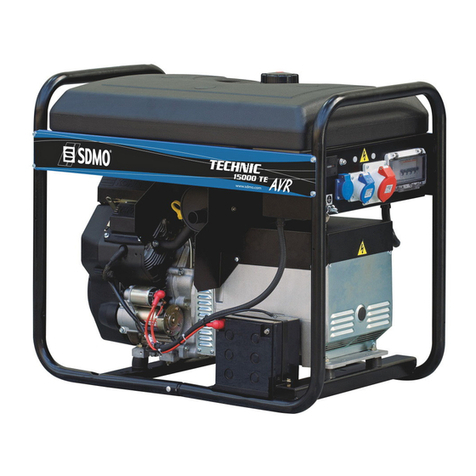
SDMO
SDMO TECHNIC 15000 TE instruction manual

Champion Power Equipment
Champion Power Equipment 75536i owner's manual
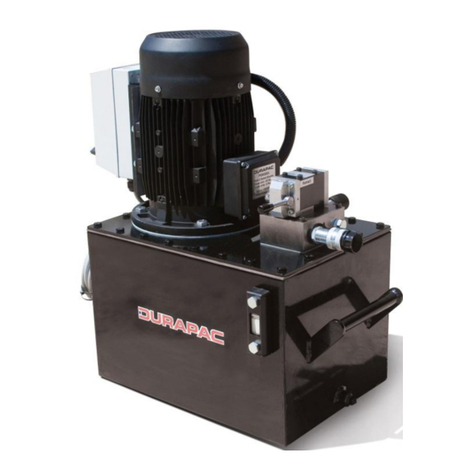
Durapac
Durapac 30 Series instruction manual


